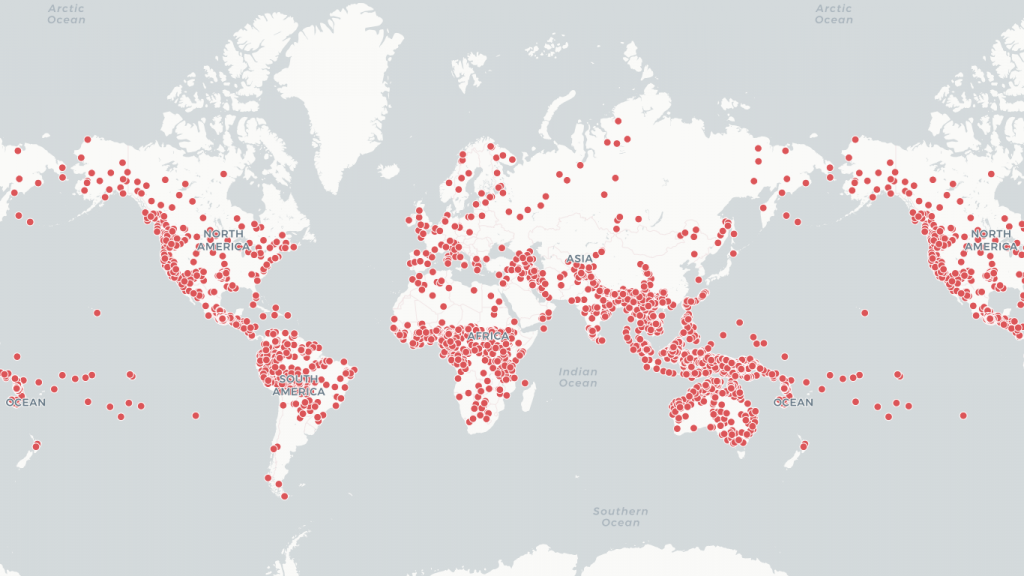After many hours spend working with Visual Studio Code, I was happy to return to learning more about the cultural aspects of folktales. In this blogpost, I want to highlight how folktales help convey cultural and linguistic attributes by working through the Konkomba folktale Why the Wasp Has a Tiny Waist.
But first…
…did you know that as of today, there are endangered 3045 languages?
To me, this number was unfathomable. Let’s make it more tangible by looking at this graphic:

Every red dot represents a language, in danger of extinction, each threatening to take with them their respective culture’s knowledge. Preserving language thus always means preserving cultural heritage as well. Luckily, there are ways in which languages can be made more visible. Folktales, being mostly oral artifacts, only one of them.
Why the Wasp Has a Tiny Waist
Have you ever asked yourself this question? Well, the Konkomba oral tradition provides an answer. In this tale, the wasp has to carry many instruments to his in-laws funeral, thus resulting in his waist being compressed under the weight. But we can learn much more from this story.

Language:
In the translation provided, some words are left in the original Likpakpaln, a practice known as foreignized translation.
In that way, we learn about the ulangben (wasp), the kiloŋ (a west African drum-like instrument) and the kinachuŋ (a communal dance of the Konkomba people) or koin koin koin (the storyteller’s imitation of the sound the wasp is making with the drums). In the glossary, you will find a much more detailed description of these terms. What I want to show here is that by keeping certain terms in the source language, a great amount of cultural meaning can be conveyed that otherwise would have been lost in translation. In highlighting single words, the marginalized language is made visible, while still sustaining readability for the english reader.
Culture:
Why did the wasp have to carry all the instruments on its own?
To answer this question, we have to understand the importance of community in Konkomba culture. The text therefore introduces the word nkpaawiin. It describes a communal activity in which, if one member of the community struggles with his load of work, the community comes to help. But it is not only work, but also an instance of communal interactions and possibility to tell stories. Members of the community are expected to engage in nkpaawiin in order to receive help in return.
The wasp however did not participate, making himself a social exile. As he was not there for his community, his community does not show up for him once he needs them to perform the communal dance for his in-laws funeral. The wasp ends up on his own, trying to proceed with the funeral rites alone. From this, we can also learn another thing. In this folktale, we find an instance in which translation has the potential to interfere in conveying cultural meaning. As you might have noticed, the wasp in the story is male. This is because in the Konkomba culture only males attend the funerals of in-laws. In the English version of the tale this translates well, but might pose a difficulty in a translation into German where the wasp is described using the female article.
So, what do folktales do?
Folktales serve as window into society. Through personified animals they can reflect on cultural values and beliefs, presenting “pseudo-historical” facts and norms. Being told for amusement purposes, folktales offer an accessible way to get familiar with a different culture. And more importantly, the telling of folktales preserves indigenous knowledge and language by making it visible.
Sources:
[1] https://www.ethnologue.com/insights/how-many-languages-endangered/ . 06.12.2023
[2] https://pixabay.com/de/photos/wespe-insekt-nahaufnahme-natur-1329563/ . 06.12.2023
[3] https://github.com/CentreforTranslationStudies/KONKOMBA/blob/main/Why%20the%20Wasp%20has%20a%20tiny%20Waist_Abena.pdf . 06.12.2023
